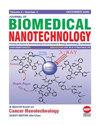Kruppel-Like Factor 5 Acetylation Upregulates Runx2 Expression and Accelerates the Dedifferentiation Process of Chondrocyte in Monolayer Culture
IF 2.9
4区 医学
Q1 Medicine
引用次数: 0
Abstract
This study aimed to investigate the role of KLF5 (Kruppel-like factor 5) in the abnormal dedifferentiation of chondrocytes (CHs) observed in osteoarthritis (OA) and monolayer culture conditions. Human primary CHs were cultured in a monolayer for 14 days, and various analyses were conducted. The area and aspect ratio of the cells were measured, and protein expression levels of KLF5, acetylated KLF5 (Ac-KLF5), and Runx2 were assessed using western blotting. Additionally, mRNA levels of chondrogenic genes (type II collagen, Col-II), hypertrophic genes (type X collagen, Col-X), and MMP-13 were determined through RT-PCR. The effects of TGF- β and Am80 supplementation on KLF5 acetylation and Runx2 expression were examined, and siRNA was used to silence Runx2 gene expression. Results showed that CHs exhibited dedifferentiation after 7 days of culture, characterized by increased cell size, larger aspect ratio, elevated Ac-KLF5 levels, decreased Col-II expression, and increased Col-X and MMP-13 expression. TGF- β treatment enhanced Ac-KLF5 and Runx2 expression, thereby accelerating dedifferentiation within 3 days. In contrast, Am80 suppressed Ac-KLF5 and Runx2 expression, leading to delayed dedifferentiation over 14 days. Silencing Runx2 mitigated KLF5 acetylation-induced CH dedifferentiation without affecting Ac-KLF5 levels. In conclusion, KLF5 acetylation promotes Runx2 expression and subsequently contributes to CH dedifferentiation during monolayer culture.Kruppel-Like Factor 5乙酰化上调Runx2表达,加速单层培养软骨细胞的去分化过程
本研究旨在探讨KLF5 (Kruppel-like factor 5)在骨关节炎(OA)和单层培养条件下观察到的软骨细胞(CHs)异常去分化中的作用。人原代CHs单层培养14天,进行各项分析。测定细胞的面积和纵横比,采用western blotting检测KLF5、乙酰化KLF5 (Ac-KLF5)和Runx2蛋白的表达水平。此外,通过RT-PCR检测软骨形成基因(II型胶原,Col-II)、增生性基因(X型胶原,Col-X)和MMP-13的mRNA水平。检测补充TGF- β和Am80对KLF5乙酰化和Runx2表达的影响,并利用siRNA沉默Runx2基因表达。结果表明,培养7天后,CHs出现去分化,表现为细胞大小增大、长径比增大、Ac-KLF5水平升高、Col-II表达降低、Col-X和MMP-13表达升高。TGF- β处理可增强Ac-KLF5和Runx2的表达,从而在3天内加速去分化。相比之下,Am80抑制Ac-KLF5和Runx2的表达,导致去分化延迟超过14天。沉默Runx2可减轻KLF5乙酰化诱导的CH去分化,但不影响Ac-KLF5水平。综上所述,KLF5乙酰化促进Runx2的表达,随后在单层培养过程中促进CH的去分化。
本文章由计算机程序翻译,如有差异,请以英文原文为准。
求助全文
约1分钟内获得全文
求助全文
来源期刊
CiteScore
4.30
自引率
17.20%
发文量
145
审稿时长
2.3 months
期刊介绍:
Information not localized

 求助内容:
求助内容: 应助结果提醒方式:
应助结果提醒方式:


